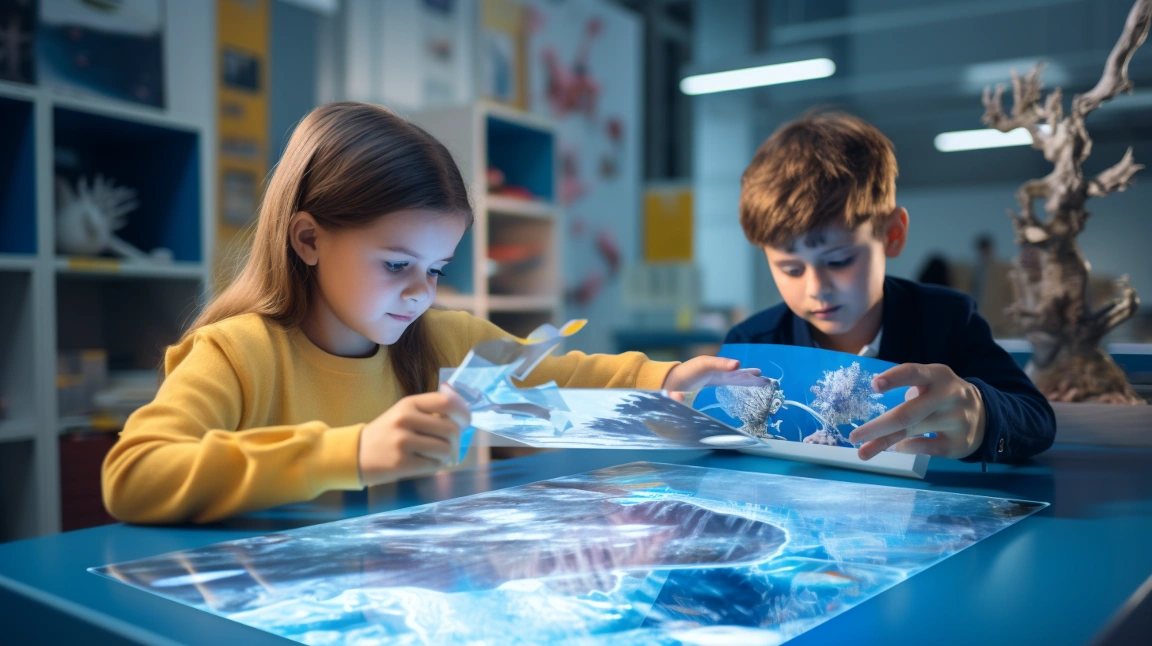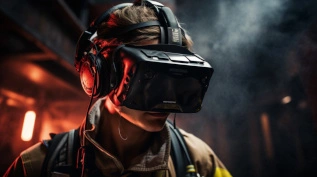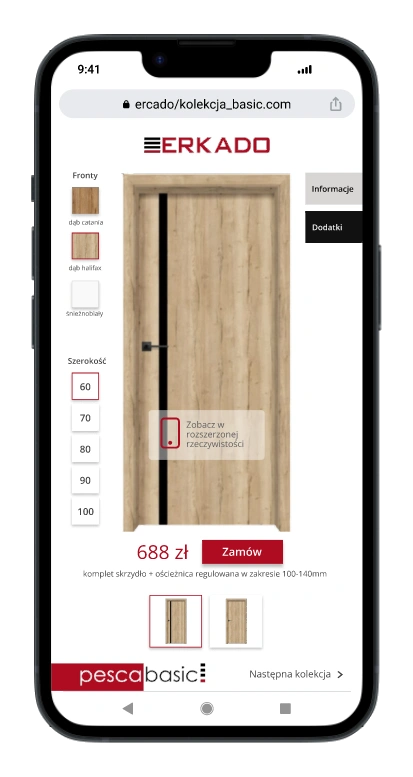Augmented reality in education

Augmented reality (AR) is increasingly boldly entering the classroom, offering new, interactive teaching methods. It transforms passive learning into an active discovery process, stimulating curiosity and student engagement. In this article, we take a look at how AR is being used in education, how it is impacting the learning process and what opportunities it presents for future educational models.
Brief introduction
Augmented reality (AR) is a technology that combines the real world and computer-generated content. This technology enhances the user's experience and perception of reality. Thanks to mobile devices and Internet access, the user can virtually 'see' an object in their environment via augmented reality.
AR is used in various fields, among others, in education. At school it is seen as an interdisciplinary project, involving educational activities at the intersection of technology and education. The use of AR in education has gained popularity in recent years due to its ability to enrich educational experiences and improve learning outcomes and engage students.
With advances in technology and the availability of affordable devices, the technology has evolved from simple marker-based systems to more sophisticated ones that use computer vision and machine learning algorithms to recognise and track objects.
Augmented reality in education
AR provides students with a visual and interactive representation of abstract concepts, making complex ideas easier to understand. Thanks to the technology the educational material becomes attractive and its recipients, namely children and young people, can easily absorb it. The much-loved and widely used mobile phones and tablets are becoming a useful educational tool.
Augmented reality can be used to create virtual field trips, enabling the discovery of places and objects that would otherwise be inaccessible. Students can interact with 3D models of ancient artefacts, scientific phenomena and engineering designs (see what 3D visualisation with SeeMyModel looks like).
Summing up, AR has the potential to revolutionise education by creating immersive and interactive learning experiences. These experiences enhance students’ engagement and their learning outcomes.
Education, however, is just one of the sectors in which AR could play a significant role in the future. Indeed, we have covered augmented reality in the manufacturing industry or AR in marketing, among others, on our blog. And these are just examples! In fact, this technology could revolutionise everything.
Apps that support augmented reality in education
There are many apps that use augmented reality for teaching. One is 'Quiver', which allows you to create your own colouring pages and then transforms them into animated 3D models using augmented reality. Another example is "Aug That!". It allows you to create interactive presentations, videos, games and simulations. Another application that uses AR technology in education is "Anatomy 4D". It allows to track the processes inside the human body in real time and, therefore, it enables students to understand the structure and function of internal organs much better. In 'Aurasma', you can design virtual images and animations which will be seen on the screen, using a mobile device with the help of an AR camera and the app. It can be used to create interactive books or presentations.
Physical education classes and augmented reality
Supplementing the physical education curriculum with the use of augmented reality technology is an interesting way to get students interested in physical activities. Thanks to AR applications, Students can create virtual sports simulations, such as virtual football matches or virtual basketball games, where they can take on the role of a player and compete against virtual opponents. Another example could be the use of VR goggles to simulate various sports such as skiing, snowboarding, surfing or climbing. The simulations allow the students to learn the basics of sports technique in a safe and controlled environment. AR can also enhance physical education classes by simulating different trainings, such as strength or aerobic ones, in which students learn the proper exercise form and technique.
There are many AR applications that support physical activity. One of these is 'Fit AR'. It allows you to track and assess your daily physical activity. It uses motion sensors to monitor physical activity and then presents the results in the form of interactive graphics and statistics. This allows users to better understand the impact of physical activity on their health and wellbeing.
Another example of an AR app that supports physical activity is 'Step Up AR'. This app uses augmented reality to create virtual running or walking paths. They show what distances students have covered and what results they have achieved. Thanks to the app, users can track their physical activity progress and motivate themselves to continue working towards their goals.
It is worth noting that physical activity can be an effective therapeutic tool for people suffering from various disorders, among others ASD. Therefore, AR apps that support physical activity are particularly useful in schools where there are children with exceptional learning needs.
Thanks to AR apps that support physical activities, students can better understand the impact of physical activities on their health and wellbeing. They can also track their progress and motivate themselves to continue working towards their goals. However, it is worth noting that any school programme must include specific learning objectives. This means that the use of AR technology in physical education classes, should complement traditional teaching methods and have a clearly defined purpose.
Read also: trends in AR.
Augmented reality challenges and future in education
Although augmented reality is revolutionising education, there are still several technical challenges and limitations that need to be addressed. One of the biggest is the device storage capacity, which can result in poor recording quality and longer application run times. In addition, integrating AR into existing infrastructure can be a complex process, requiring significant investment in hardware and software. Overcoming these technical challenges is crucial to the successful implementation of AR in schools.
Another challenge is to ensure effective integration with existing curriculum and teaching methods. Teachers must be trained to use augmented reality effectively and have access to appropriate resources and support. It is important that AR is not used as a standalone tool, but rather as a tool to complement traditional teaching methods. By integrating AR into existing teaching methods, students can benefit from more immersive and interactive learning
Despite the challenges, the future prospects and potential of AR in education are promising. Furthermore, AR can help bridge the gap between theoretical concepts and the real-world implementation, making learning more practical and useful. As the technology continues to advance, the potential of AR in education will grow. With the right investment and technological support, it can change the way we teach and learn in and out of school.
At the very end, we encourage you to test our 3D configurator - see how AR works in practice and how it can be used, among other things, for educational purposes, but not only!
Do you like the post? Share to others!

Krzysztof Basista
COO
For years, he has been involved in AR / VR projects ranging from entertainment to heavy industry. Always looking for problem solving through technology.
Contact us
Related posts

The Metaverse is a concept that is increasingly emerging in discussions about the future of technology and the digital world...

In an era where efficient, effective, and engaging training is integral to a company's success, many are turning to emerging technologies for solutions...

It is a powerful tool for presenting complex 3D models in a friendly and intuitive way. With the right techniques, you can easily visualise...

It is said that everything is worth what someone is willing to pay for it. However, as is sometimes the case with innovation, the cost of creating it...

Marketing activities on the Internet - it's a book-size topic. For a long time now, just having an online presence means literally nothing.

Objects represented in 3D product visualisations have depth in addition to length and width. This makes it possible to achieve an effect...






